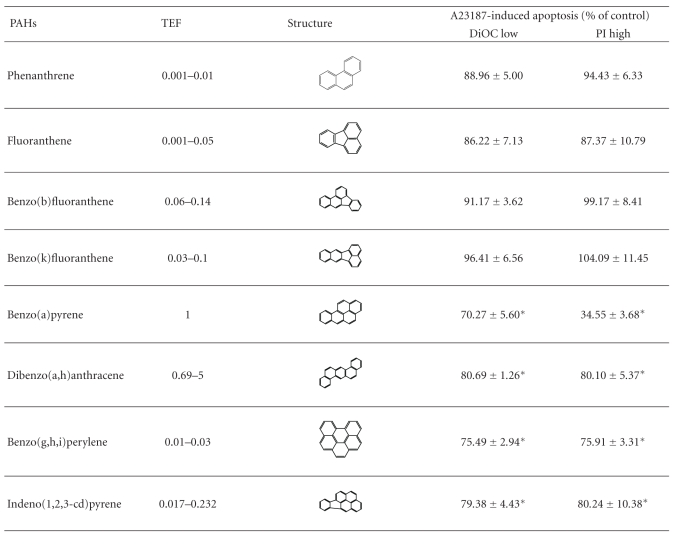Table 2.
The cytoprotective effect of PM2.5 is related to PAHs with five-aromatics rings. Epithelial 16 HBE cells were pretreated during 4 hours with phenanthrene (124 nM), fluoranthene (268 nM), benzo(b)fluoranthene (333 nM), benzo(k)fluoranthene (333 nM), benzo(a)pyrene (270 nM), dibenzo(a,h)anthracene (35 nM), benzo(g,h,i)perylene (443 nM), and indeno(1,2,3-cd)pyrene (217 nM) prior to induction of apoptosis by A23187 (3 μM) for 20 supplementary hours. Results are mean ± SD (n = 6). Significance was calculated with Dunnett's test (*P < 0.01 versus vehicule cyclohexane 1%). Percentages of DiOC low and PI high refer to cells showing either a drop of ΔΨm or a permeabilization of the plasma membrane measured using DiOC and propidium iodide (PI) probes, respectively. Note that a 4 h vehicle pretreatment provides 93.00 ± 3.31% DiOC low and 96.97 ± 7.18% PI high of A23-induced apoptosis, respectively. Moreover, a 4 h PM2.5 exposure (10 μg/cm²) provides 64.33 ± 9.89% DiOC low and 39.45 ± 8.50% PI high of A23-induced apoptosis, respectively. The relative toxic potency of individual PAH compared to BaP is given as the toxic equivalency factor (TEF).

|
